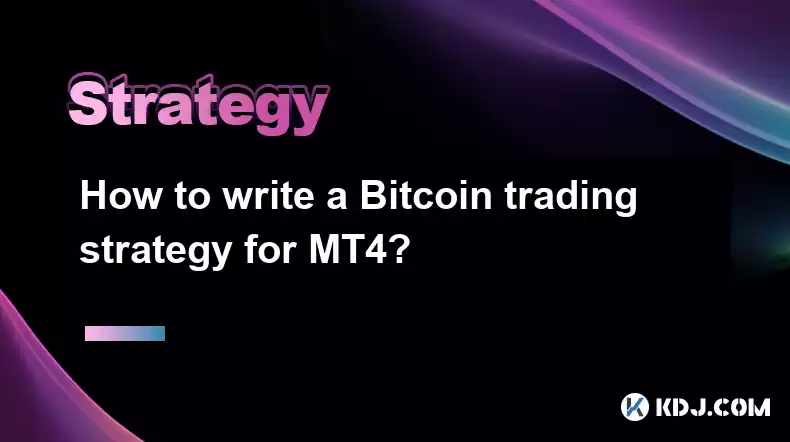-
 Bitcoin
Bitcoin $118400
1.64% -
 Ethereum
Ethereum $4210
-1.74% -
 XRP
XRP $3.175
-2.25% -
 Tether USDt
Tether USDt $1.000
0.00% -
 BNB
BNB $800.7
-0.18% -
 Solana
Solana $183.2
1.19% -
 USDC
USDC $0.9998
0.00% -
 Dogecoin
Dogecoin $0.2319
-4.30% -
 TRON
TRON $0.3388
1.11% -
 Cardano
Cardano $0.7951
-1.77% -
 Hyperliquid
Hyperliquid $44.76
1.61% -
 Chainlink
Chainlink $21.93
2.82% -
 Stellar
Stellar $0.4409
-1.92% -
 Sui
Sui $3.828
-2.37% -
 Bitcoin Cash
Bitcoin Cash $568.3
-0.57% -
 Hedera
Hedera $0.2561
-2.80% -
 Ethena USDe
Ethena USDe $1.001
-0.02% -
 Avalanche
Avalanche $23.63
-3.68% -
 Litecoin
Litecoin $124.0
1.80% -
 Toncoin
Toncoin $3.317
-2.74% -
 UNUS SED LEO
UNUS SED LEO $9.029
0.34% -
 Shiba Inu
Shiba Inu $0.00001349
-2.54% -
 Uniswap
Uniswap $10.85
-1.44% -
 Polkadot
Polkadot $4.025
-2.41% -
 Dai
Dai $1.000
0.01% -
 Cronos
Cronos $0.1619
2.41% -
 Ethena
Ethena $0.7756
4.12% -
 Bitget Token
Bitget Token $4.437
-1.70% -
 Pepe
Pepe $0.00001194
-3.82% -
 Monero
Monero $267.3
-2.17%
How to write a Bitcoin trading strategy for MT4?
Technical analysis, such as studying moving averages and support and resistance levels, can help identify potential trading opportunities in Bitcoin.
Feb 25, 2025 at 04:30 am

Key Points:
- Choosing the Right Trading Platform: Factors to Consider
- Understanding Market Analysis: Technical and Fundamental Analysis
- Defining Profit Targets and Stop-Loss Levels
- Risk Management: Managing Positions and Leveraging
- Order Types: Market, Limit, and Stop-Limit Orders
- Backtesting and Optimization: Evaluating Strategies
- Psychology and Discipline: Emotional Control and Execution
Step-by-Step Bitcoin Trading Strategy for MT4:
1. Choose the Right Trading Platform
- Metatrader 4 (MT4): Renowned platform specifically designed for forex and CFD trading with advanced charting capabilities and customizable indicators.
- TradingView: Web-based platform with a user-friendly interface, extensive chart types, and advanced technical analysis tools.
- eToro: Social trading platform with a copy trading feature, enabling traders to follow and mimic the strategies of experienced traders.
2. Understand Market Analysis
Technical Analysis:
- Studies price movements using historical data and chart patterns.
- Tools like moving averages, support and resistance levels, and oscillators help identify trends and predict price action.
Fundamental Analysis:
- Analyzes economic and industry-specific factors that influence Bitcoin's price.
- Includes news events, regulatory changes, developer updates, and supply and demand dynamics.
3. Define Profit Targets and Stop-Loss Levels
- Profit Target: The pre-determined price level at which a trade is closed for a profit.
- Stop-Loss Level: The pre-determined price level at which a trade is closed for a loss to minimize potential drawbacks.
- Considerations for setting these levels include market volatility, risk tolerance, and trade objectives.
4. Risk Management
- Position Sizing: Determining the amount of capital to allocate to each trade based on risk tolerance and account balance.
- Leverage: Using borrowed funds to increase trading potential while also amplifying both gains and losses. Manage leverage responsibly.
- Diversification: Spreading trades across different assets to reduce the impact of losses in a single currency.
5. Order Types
Market Order: Executes immediately at the current market price.
Limit Order: Specifies a specific price at which to buy or sell, ensuring the desired entry or exit point.
Stop-Limit Order: Combines a stop order (triggers when a specific price is reached) with a limit order (executes at a specified price).
6. Backtesting and Optimization
- Backtesting: Testing a trading strategy on historical data to evaluate its performance, identify weaknesses, and make adjustments.
- Optimization: Refining strategy parameters (e.g., technical indicators, profit targets) to enhance profitability and reduce risk.
7. Psychology and Discipline
- Emotional Control: Maintaining composure and avoiding impulsive trading decisions based on fear or greed.
- Execution: Sticking to the defined trading strategy even when emotions run high.
FAQs:
What is the best Bitcoin trading indicator for MT4?
- There is no definitive "best" indicator, as the effectiveness of each depends on the specific trading style and market conditions. Popular technical indicators include moving averages, RSI, and MACD.
How to trade Bitcoin scalping on MT4?
- Scalping involves placing multiple short-term trades, aiming for small, frequent profits. It requires a high level of technical analysis proficiency, tight risk management, and rapid order execution.
What is a good leverage for Bitcoin trading?
- Leverage should be used judiciously to avoid amplifying both gains and losses excessively. Leverage levels vary depending on trading experience and risk tolerance, but it is generally advisable to start with lower values.
Disclaimer:info@kdj.com
The information provided is not trading advice. kdj.com does not assume any responsibility for any investments made based on the information provided in this article. Cryptocurrencies are highly volatile and it is highly recommended that you invest with caution after thorough research!
If you believe that the content used on this website infringes your copyright, please contact us immediately (info@kdj.com) and we will delete it promptly.
- LYNO AI & XRP: Decoding the ROI Potential in a Shifting Crypto Landscape
- 2025-08-11 04:30:11
- Cryptos on the Cusp: Cold Wallet, Price Breakouts, and What's Hot Now
- 2025-08-11 04:50:11
- Dogecoin, Meme Coins, and Remittix Utility: What's the Hype?
- 2025-08-11 04:50:11
- Sky Bet, ESPN, and the Spartans Bonus: A Betting Landscape Overview
- 2025-08-11 05:11:16
- Altcoin Buyouts & Market Removals: Crypto Development's Wild Ride
- 2025-08-11 04:30:11
- Bitcoin Banks Arrive: El Salvador's Bold Play with Investment Banks and Crypto
- 2025-08-11 04:55:12
Related knowledge

How to use stop-loss orders to limit potential losses?
Aug 08,2025 at 02:01pm
Understanding Stop-Loss Orders in Cryptocurrency TradingA stop-loss order is a risk management tool used by traders to automatically sell a cryptocurr...

What are the most promising altcoins to invest in?
Aug 10,2025 at 11:42am
Understanding the Role of Private Keys in Cryptocurrency WalletsIn the world of cryptocurrency, private keys are the cornerstone of ownership and cont...

How to read cryptocurrency charts and use technical analysis?
Aug 08,2025 at 11:08am
Understanding the Basics of Cryptocurrency ChartsCryptocurrency charts are graphical representations of price movements over time. These charts are es...

What is the difference between long-term holding (HODLing) and short-term trading?
Aug 10,2025 at 05:30pm
Understanding HODLing in the Cryptocurrency SpaceThe term HODL originated from a typo in a 2013 Bitcoin forum post and has since become a widely accep...

How to do your own research (DYOR) before investing in a crypto project?
Aug 08,2025 at 09:07pm
Understanding the Core Principles of DYOR in CryptocurrencyEngaging in due diligence before investing in any cryptocurrency project is essential to mi...

How to build a diversified crypto portfolio?
Aug 09,2025 at 12:21pm
Understanding the Importance of Diversification in CryptoDiversification in the cryptocurrency space is a strategy used to reduce risk by spreading in...

How to use stop-loss orders to limit potential losses?
Aug 08,2025 at 02:01pm
Understanding Stop-Loss Orders in Cryptocurrency TradingA stop-loss order is a risk management tool used by traders to automatically sell a cryptocurr...

What are the most promising altcoins to invest in?
Aug 10,2025 at 11:42am
Understanding the Role of Private Keys in Cryptocurrency WalletsIn the world of cryptocurrency, private keys are the cornerstone of ownership and cont...

How to read cryptocurrency charts and use technical analysis?
Aug 08,2025 at 11:08am
Understanding the Basics of Cryptocurrency ChartsCryptocurrency charts are graphical representations of price movements over time. These charts are es...

What is the difference between long-term holding (HODLing) and short-term trading?
Aug 10,2025 at 05:30pm
Understanding HODLing in the Cryptocurrency SpaceThe term HODL originated from a typo in a 2013 Bitcoin forum post and has since become a widely accep...

How to do your own research (DYOR) before investing in a crypto project?
Aug 08,2025 at 09:07pm
Understanding the Core Principles of DYOR in CryptocurrencyEngaging in due diligence before investing in any cryptocurrency project is essential to mi...

How to build a diversified crypto portfolio?
Aug 09,2025 at 12:21pm
Understanding the Importance of Diversification in CryptoDiversification in the cryptocurrency space is a strategy used to reduce risk by spreading in...
See all articles

























































































